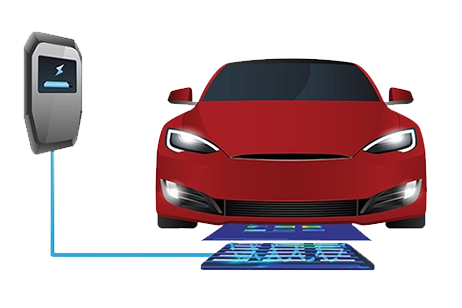Driving Innovation in Electric Vehicle Technology with EMWorks
Advanced Electromagnetic Solutions for EV Design and Efficiency
Electric vehicles (EVs) are revolutionizing transportation, with battery charging systems at the heart of their performance and reliability. EMWORKS offers advanced simulation tools to design and optimize EV battery charging systems, ensuring energy efficiency, thermal management, and compliance with industry standards. Transform your EV innovations with EMWORKS.
-

EV Battery Charging
Explore EMWorks' electromagnetic design software tailored for electric vehicle (EV) battery charging applications.

